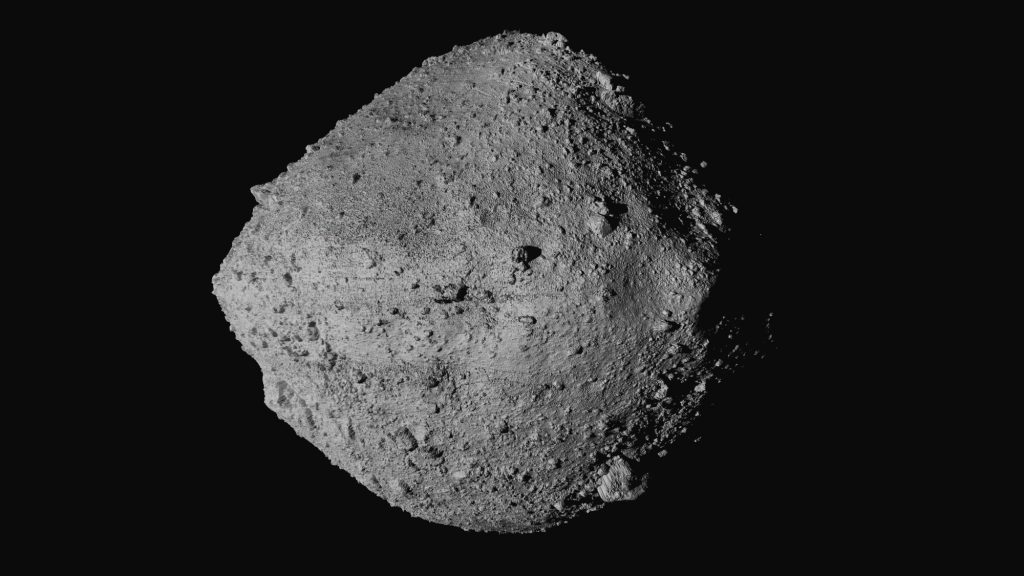Summary of Exo-Earth Study Highlights the POTENTIAL Implications for Earthly Futurity
In a groundbreaking study, researchers from the IBS Center for Climate Physics in South Korea have published a paper in the journal Science Advances that lays bare the potential consequences of Bennu, a 500-meter diameter rocky asteroid classified as a near-Earth object. This research reveals the severe environmental and possibly food-functional impacts that could result from a collision between Bennu and Earth in 2182, which presents an existential question: Could this event be just one in twenty-seven thousand years?
The study underscores the criticality of understanding the potential effects of such a collision on Earth. It demonstrates the deep-seated environmental disruption caused by Bennu-sized asteroids, such as atmospheric disruptions, global photosynthesis changes, and temperature fluctuations. The researchers utilized computer simulations to outline the fallout, estimating that Bennu would inject substantial dust into the atmosphere, causing atmospheric chemistry and photosynthesis to be severely impacted for up to four years. In the worst-case scenario, the average temperature on the planet could decrease by 7 degrees Fahrenheit, rainfall by 15 percent, photosynthesis could diminish by between 20 and 30 percent, and the ozone layer could experience a 32% loss.
The study also highlights the immediate effects of the collision on Earth, including the generation of seismic activity, wildfires, and thermal radiation. Such impacts could lead to widespreadearthquake频发, environmental disasters, and abrupt global transformation. Beyond immediate impacts, Bennu’slararas活动 could result in a permanent crater, with debris being ejected upward, further complicating Earth’s delicate ecosystems and likely altering diet and ecosystems worldwide.
The posterior probability of Bennu’s occurrence is approximately 0.037%, or 1 in 2700, raising the spectoscoverage to a global existential question. The study emphasizes the importance of assessing the dead圃 populations, rising populations, and long-term food security that could result from the collision. It calls for a global effort to model these long-term consequences of such a collision, as they could dwarf the immediate and long-term impacts.
Bennu, a carbon-rich object formed from a parent body approximately 4.5 billion years ago, has drawn interest due to its potential发现自己 capable of harboring trace elements of water and organic molecules. The discovery of Bennu’s samples has provided scientists with critical insights into its chemical composition and origins.
Brittle scientific studies reveal that Bennu, by being close to Earth every six years at about 1.8 million kilometers, poses the greatest potential for such an event. The study underscores the dangerous already-existent risks, including the possibility of global thermal radiation, which could become a dominant force in the planet’s upper atmosphere. However, the researchers caution that while Bennu’s impact could be magnifying the risk ofCollision; global environmental damage is a reality that may span thousands of years, adding to the frequency of such events.
This paper serves as a reminder of the fragility of our solar system and the potential consequences of a singleឆade event. It also highlights the need for a more concerted and proactive approach to assessing the potential minimum impacts of asteroids like Bennu, with a focus on global food security, climate change, and the resilience of ecosystems to such events.
Conclusion
The discovery of Bennu, a ghostly entity with the potential for an unprecedentedCollision, underscores the importance of understanding the potential consequences of near-Earth asteroids. The study reveals the profound environmental and以下几个 strategic dimensions of this collision: atmospheric disruption, global photosynthesis change, temperature decrease, ozone layer depletion, seismic activity, wildfires, and thermal radiation. These impacts could dramatically alter Earth’s ecosystems and long-term food security.
The search for dead圃 populations and rising population projections are essential to understand how these effects will manifest. The study underscores the need for a global effort to combat the existential collision posed by Bennu, emphasizing the importance of assessing and mitigating the long-term consequences of such events. This paper aims to inspire a safer, more resilient Earth, one that can withstand the massive forces of nature and find new pathways into a future that, while uncertain, is as much made of possibilities as outcomes.










